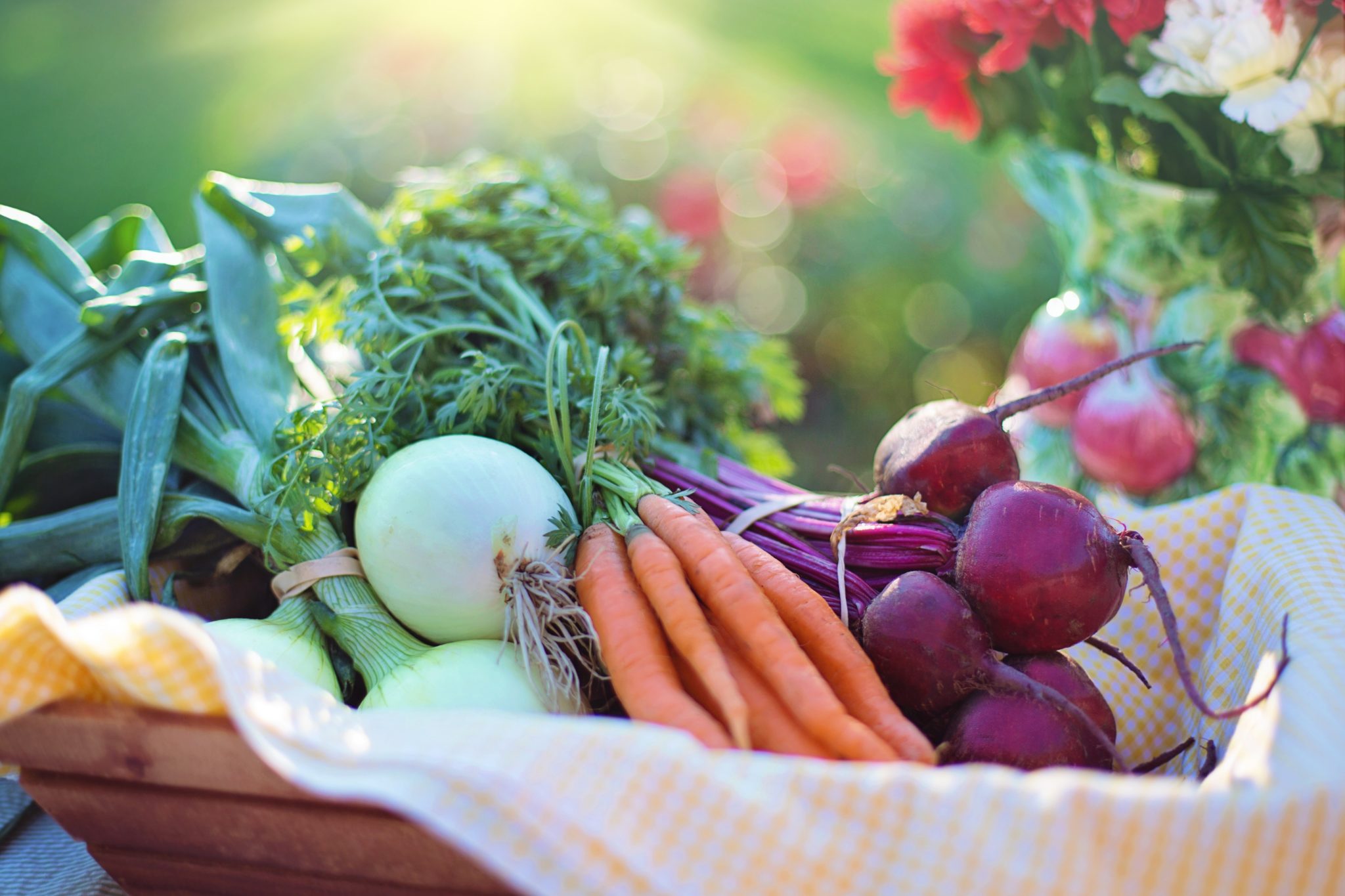
If you raise a garden you know how much you need extra refrigerator space in the summer. As produce starts ripening it seems like it comes in a torrent. There may be so much all at once that you can barely keep up with it. Or sometimes it comes on slowly and you need to keep your tomatoes and peppers fresh while you are waiting for enough to make a batch of salsa. Either way, I find my refrigerator packed and I still have produce sitting around in buckets on my porch waiting for me to do something with it, and invariably I end up losing some of it. Then there is also the question of how to store those beautiful apples so they will remain fresh and crisp through the winter.
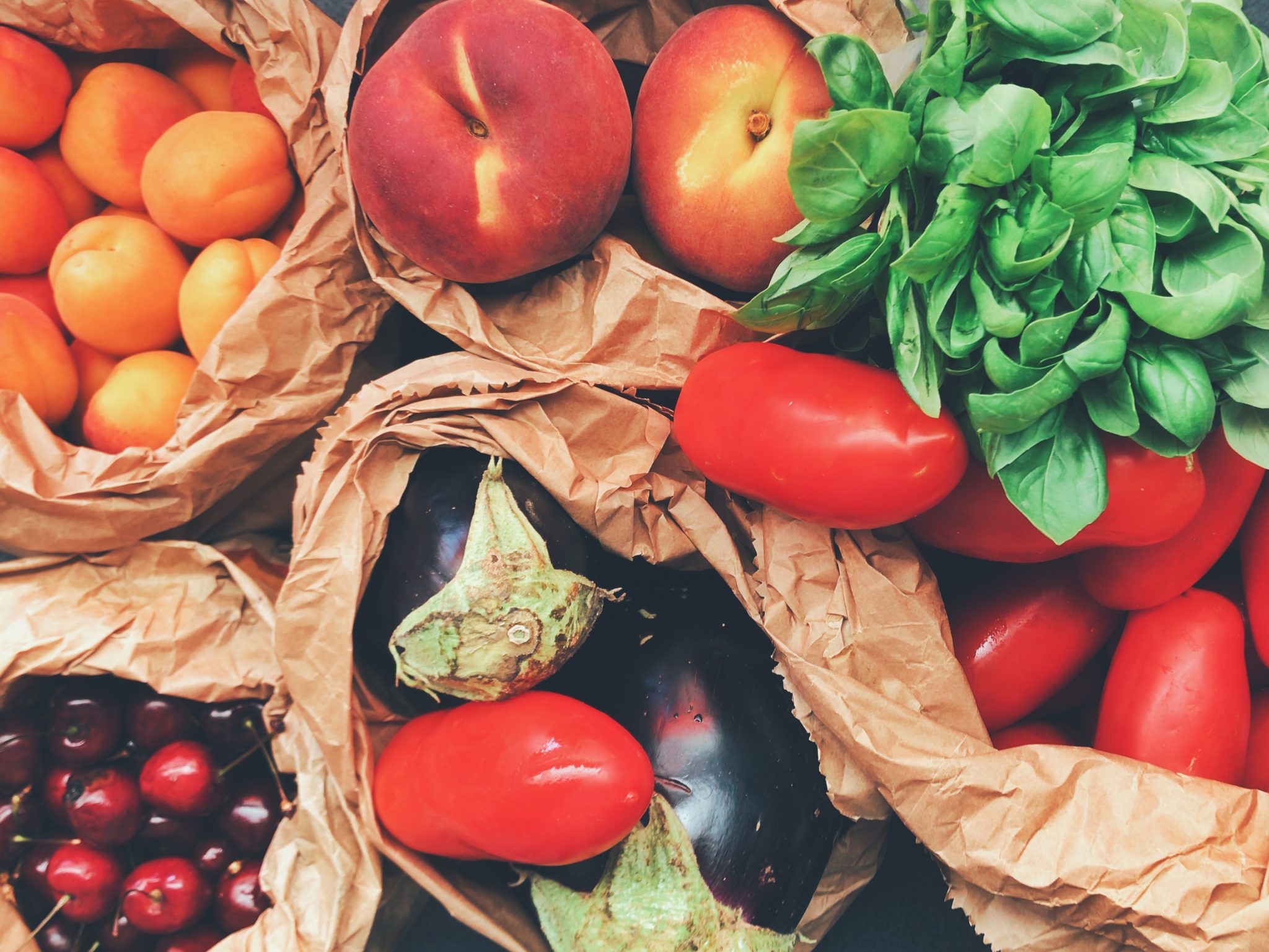
Upright Refrigerator vs Chest Freezer
I have found a very versatile and inexpensive addition to my refrigerator space. I bought a second-hand chest freezer and a freezer controller. If you think about the physics of air movement we all know that hot air rises and cold air sinks. Every time we open an upright refrigerator or freezer the cold air flows out onto the floor and warm air flows up to replace it. The motor then has to kick on to cool it down again. In a chest freezer, the cold air doesn’t flow up over the top when it is open. Cold air will always sink so it is contained in the freezer which makes the cost of running it very minimal.
I purchased a freezer controller from Amazon which allows me to control the temperature in the freezer. It is straightforward and easy to set up. It comes with a probe on a wire that you put down into the freezer and a controller that you plug into the wall and then you plug the freezer into the controller. That is all there is to it. There is a dial on the controller that you can adjust to get the temperature you want. You will want to purchase an inexpensive thermometer to put into the freezer to know the temperature exactly.
Loading up a chest freezer is a little more complicated than an upright, but it is so much more cost effective, that to me it is worth it. I use plastic crates and ice cream buckets to help me stack my produce. Using this method I can collect enough tomatoes and peppers for a batch of salsa. I can make my cucumbers wait until I have time to turn them into pickles. We can enjoy eating fresh peaches and plums well beyond their regular season.
One more advantage of using a chest freezer/refrigerator is that it is versatile. I can finish up my produce and then disconnect it from the controller and use it as a freezer again.
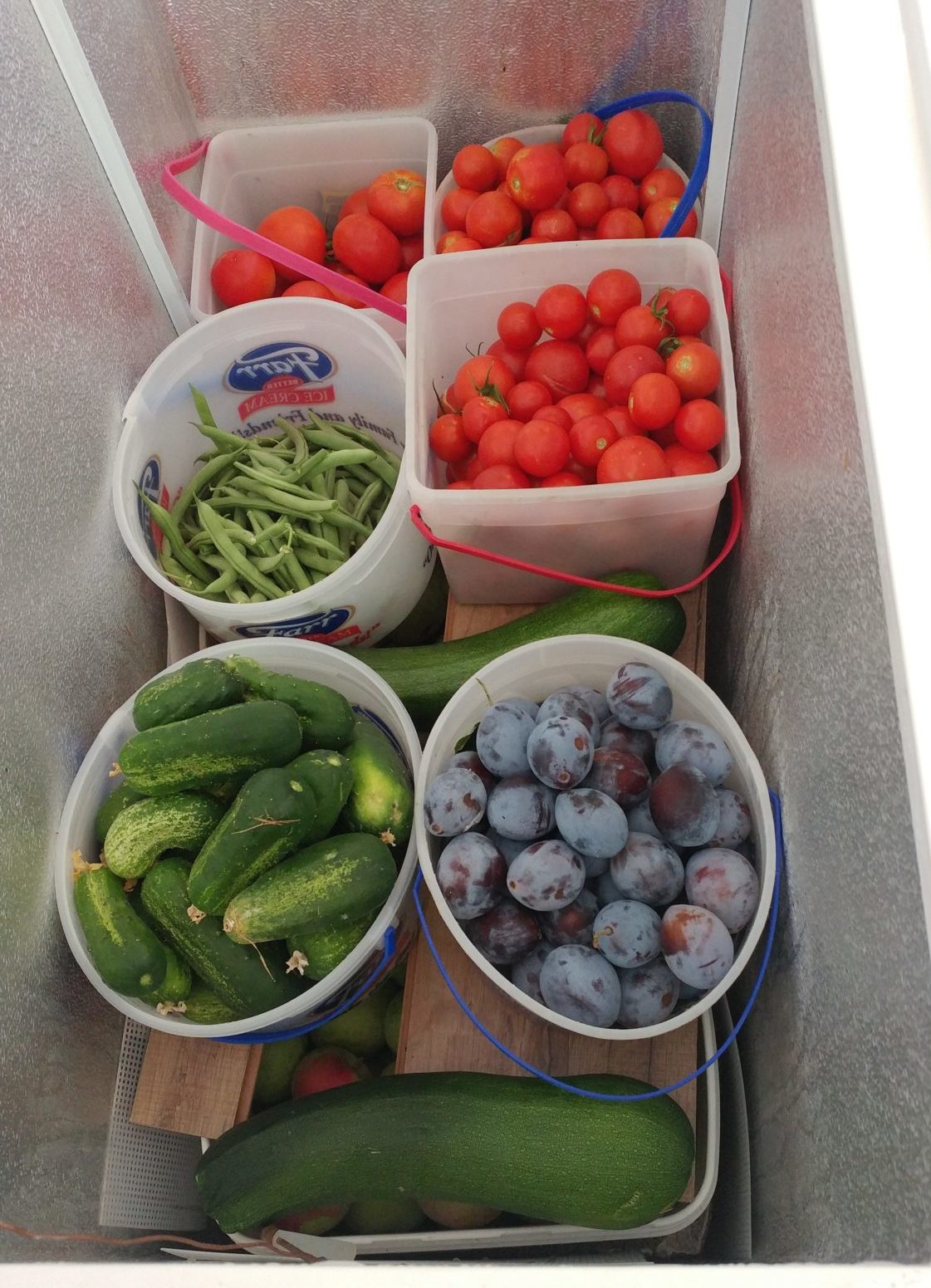
Storing Apples
One of the best uses for my refrigerator/freezer is to store apples for the winter. I can fill up the whole freezer with apples and keep them crisp and delicious through the entire winter. When storing apples the variety is very important. Some apples just don’t store well. I have a golden delicious that is fantastic for eating right off the tree, or making applesauce, juice, or dried apples but they don’t store well. After a month in storage they will turn soft and mealy. I also have a fuji that will last through the entire winter and well into the next summer if they are stored in my fridge. So it is worth doing some homework before you plant your trees and plant apples that will suit your purpose.
Some things I have learned about keeping apples in cold storage:
- Store only perfect apples. Remove any apples with bruises, nicks, or cuts.
- Use plastic crates and tubs that you can stack.
- Store smaller apples at the bottom and larger ones on the top. The larger ones should be used first. They will not last as long as the smaller ones.
- Keep the temperature as close to 32 degrees as you can get it.
- Do not let the apples touch the sides of the freezer. I use plastic canvas or some kind of liner to act as an insulator between the apples and the freezer.
- Monitor the temperature before you put them in. Regular produce is happy about 40 degrees but apples need it colder for long-term storage. One year I didn’t reset my temperature down after my summer produce and after about a month my apples started rotting from the inside and I lost at least ¾ of them.
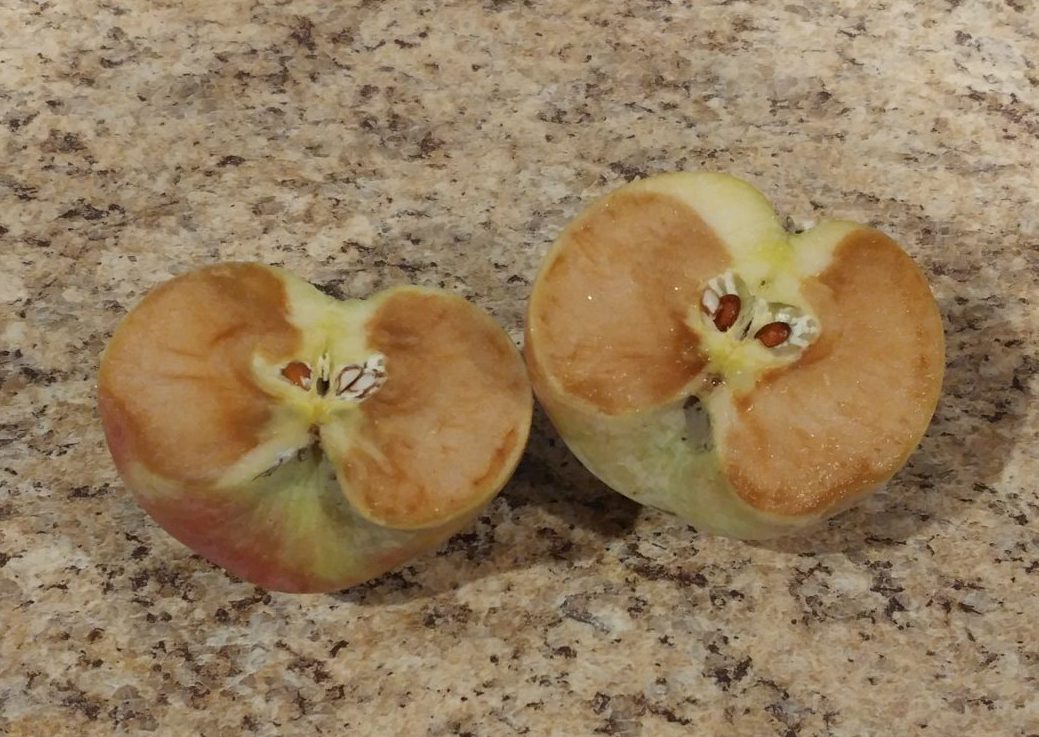
Apples rotting from the inside.
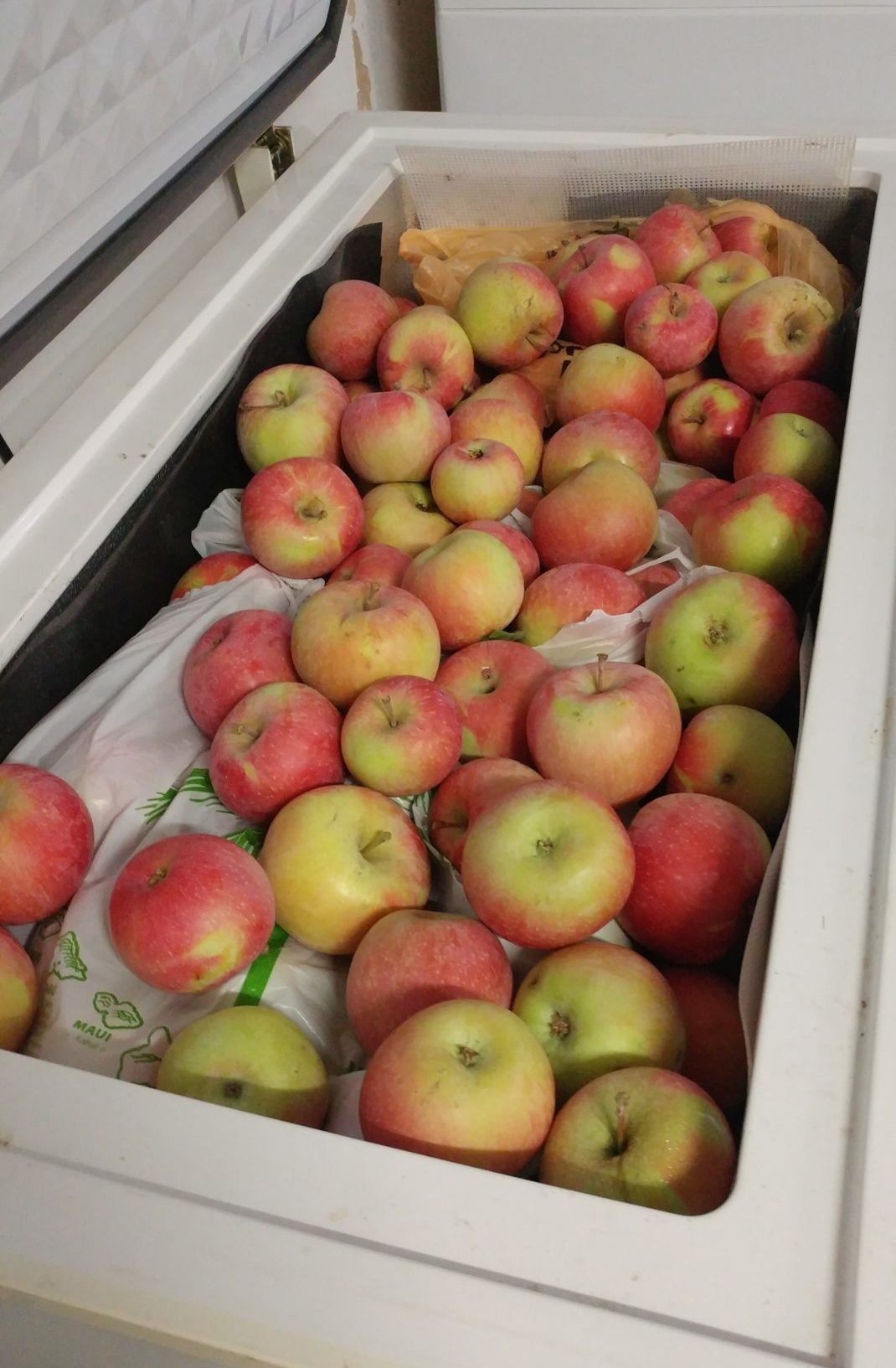
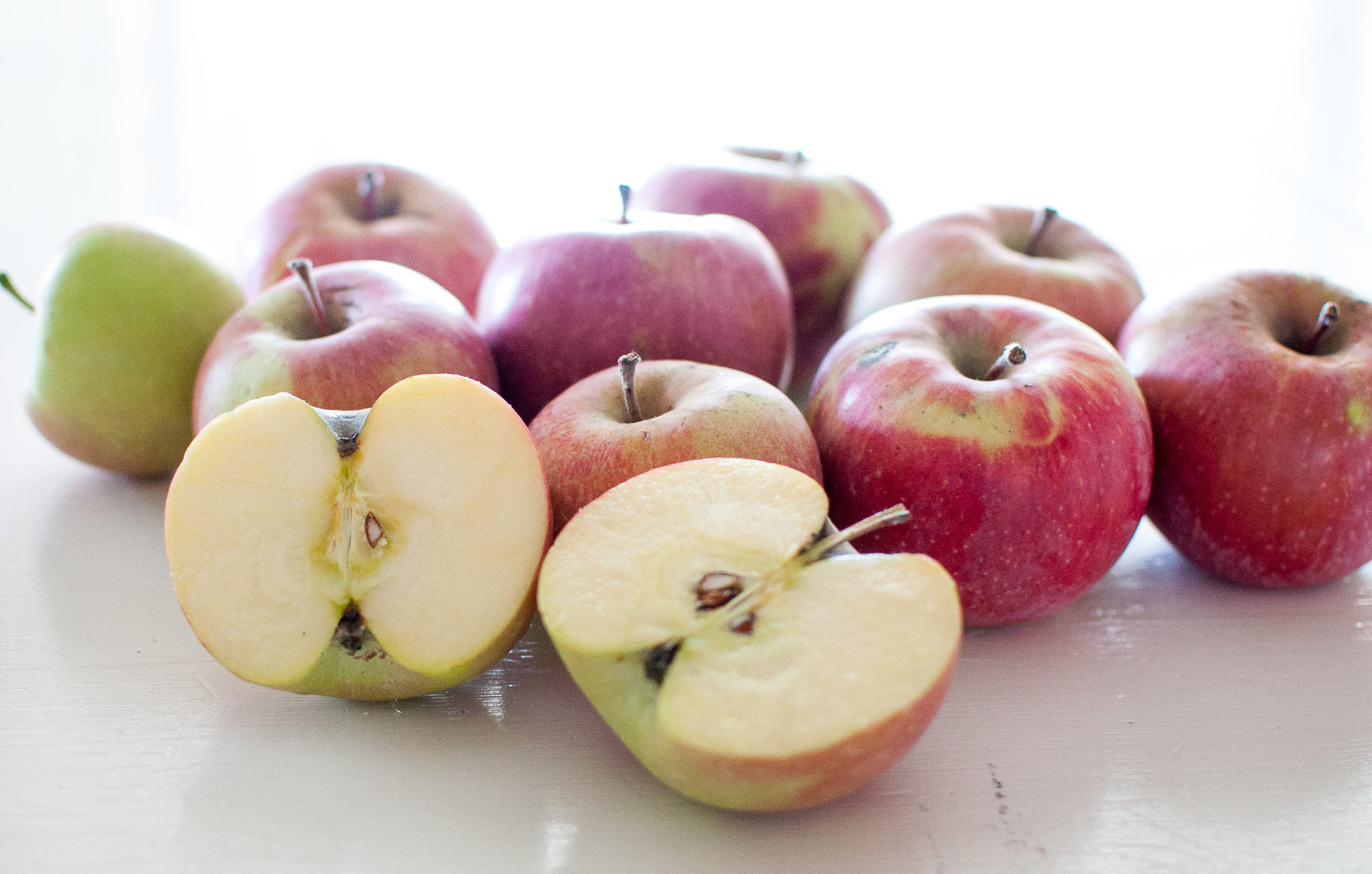
Using this method to store apples I have been able to fill up my entire freezer/refrigerator and eat perfect, crisp, juicy apples all winter long.

Great tips Rae! I like the idea of using a freezer as a refrigerator.